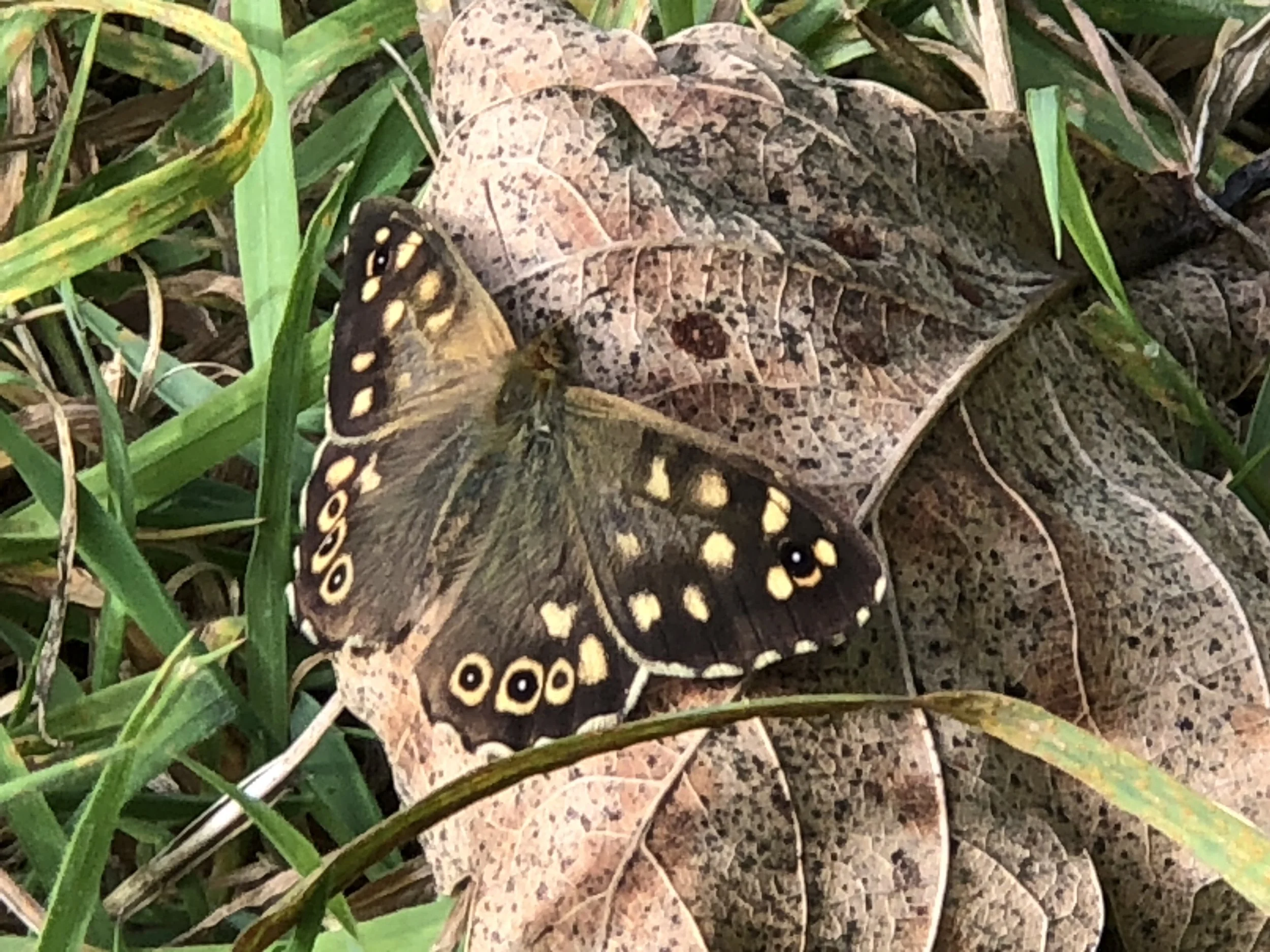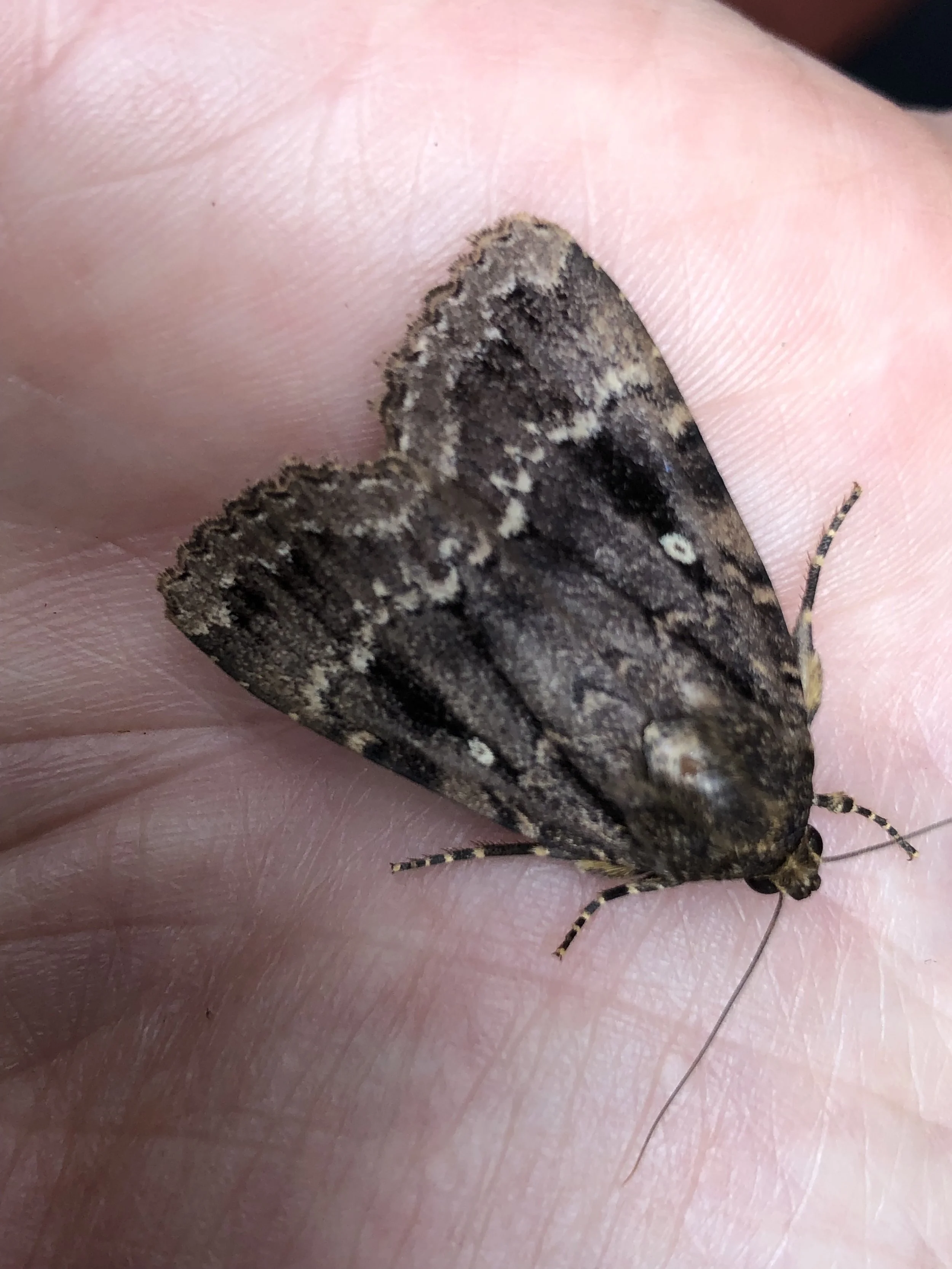Thank you for supporting this Blog. Remember that to see the videos you will need to access them through our website: www.liddells.co.uk and then click on BLOG.
2nd November
John occupied himself strimming the path below the apiary and around the felled Ashes while Clare cleared up from cutting back the hedge on the Meadow and cleaning the water trough ready for the sheep.
Together they mended the small patch of stone wall pushed over by cattle in the neighbouring field.
5th November
John saw the first visiting Woodcock of the winter below the apiary - perhaps it was admiring the newly prepared path.
7th November
Clare and Sally met to do some tree planting. The morning was bright and cold and there was an inversion in the valley to the north - the warmth of the sun had created a layer or warmer air above the cooler air at ground level creating a layer of mist between the two. It was very beautiful.
Sally enjoys planting her own trees and talking to them as she does so. Clare had the less strenuous and conversational task of fetching and carrying wire cages, tubes and stakes.
Sally had brought 4 Oaks and 4 Horse Chestnuts that she had grown in pots, and what she thought were 3 nut trees that had regenerated in her garden. Closer inspection showed that there were 5 saplings and Clare and Sally decided they might be Hornbeams, so planted them near to the Hornbeams Barbara had given Clare some years ago. There were also two Oaks to plant donated by Ros from choir.
10th November
John and Mel worked on weeding and clearing round some of the fruit trees in the Orchard to give the trees space.
John collected the disc from the camera at the end of the Orchard only to discover that the date is wrong. Again. More reminder notes needed when the batteries are changed. Nonetheless Clare was pleased to see the black cat, now a regular visitor, having a good look into the wall where Clare has created habitat that she hopes will be used by small mammals. The cat’s interest suggests there may be a life in the wall.
Word must be getting around the local feline community. Another visitor, though less frequent, is this ginger cat.
The Pit Wood camera has its own ideas about time. No matter how often John and Clare change the date, the camera insists it can see into the future. The clips below shows the roe twins playing with the doe watching on. They display no signs of alarm - the caudal patches are not erect - they just seem to be having a romp. Playtime begins at the top of the Pit Wood in the Orchard.
More deer footage from the Pit Wood. The buck demonstrates how the rainwater sits on his coat rather than penetrate it; the doe resists the buck kid’s attempt to suckle. She is likely to have mated again in the rut and although subject to embryonic diapause, she is readying the kid to separate from her care. Her continuing care includes grooming but not mating - the kid seems to look puzzled at her lack of interest in his advances.
14th November
John saw the first flocks of Fieldfares and Redwings on Liddells this year. There were so many he called it Fieldfare Friday. A piece in the RSPB magazine recounts how ‘One study found that Redwings prefer Holly and Hawthorn berries, while another highlighted the importance of Rowan berries early in the winter, and Whitebeam in some areas. Redwings have also been shown to detect fruit using ultraviolet vision. The waxy coating of some berries reflevts UV light, and Redwings have shown a preference for these. Other factors, such as the, timing of the berries, can influnce which are chosen. Some berries, such as Holly, may be left until they are riper.’ There are huge quantities of Hawthorn berries this year so the Redwings’ appetite should be easily satisfied.
Although not captured on camera very often since the rut, the murder buck is still around.
17th - 19th November
The Orchard camera is recording plenty of movement between the Orchard and the Pit Wood. Many birds seem to be foraging in the grass. It is likely they are Fieldfares and Redwings however the grass is tto long to be sure. The clips below show Jays, two hares, and a Pheasant and a Robin. Clare wondered whether in the latter clip the birds are vying for a Christmas card opportunity.
21st November
Snow made it difficult to get up to Liddells, however the camera shows a pair of hares in the snow. Not Snow hares. You can read about them, more correctly called Mountain hares, here.
22nd November
Although most of the snow disappeared very quickly, a thin layer of ice remained on Pond Maggiore. No skating will happen. The Roadside pond is at last holding water after Clare’s excavations. Gorse is in flower - who need to wait for Mistletoe - and Clare noticed that although the berries haven’t ripened, one of the Junipers is extremely fruitful. It thus reveals itself as a female plant.
24th November
Mel came to help again and he and John finished weeding and clearing round the trees in the Orchard. Clare planted more Willow whips in Sylvia’s Avenue where some had failed and introduced more whips crossing diagonally between the planting to help thicken what will be the walls of the walk.
29th November
Torrential rain stopped and instead a rainbow appeared over Liddells. Then the rain started again. Before it did, Clare started clearing undergrowth in the apiary then she and John worked on still more tidying up from the Ash felling. A lot of Ash was felled.
Farmer John has brought some of his sheep up to graze off the Hayfield. John and Clare were pleased to see them on the far side of the top planting rather than knocking the tubes over.
30th November
You will be reading this in December. How about engaging with Northumberland Wildlife’s Trust’s 12 Days Wild challenge. A great way to spend the twelve days of Christmas. You might even be lucky enough to see a partridge in a pear tree. Good luck!



















